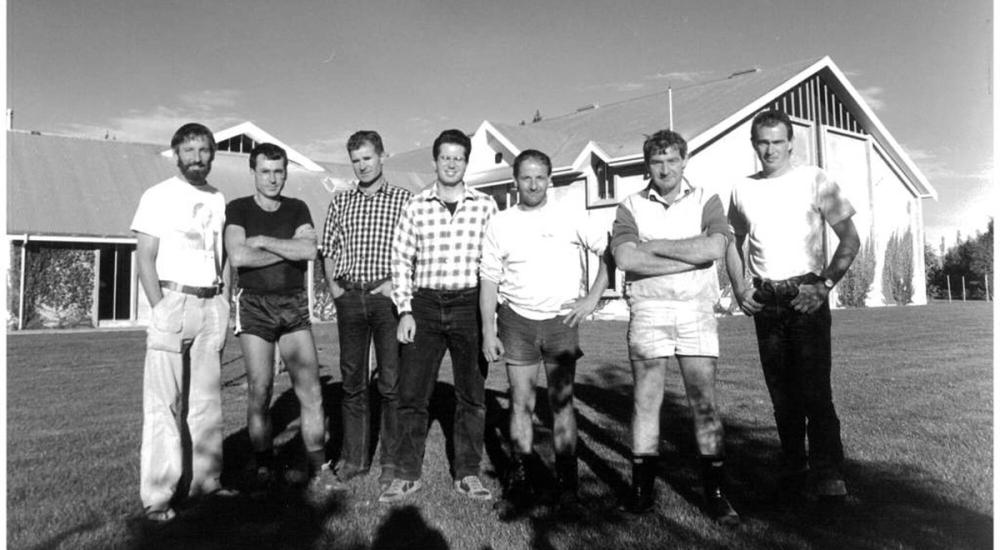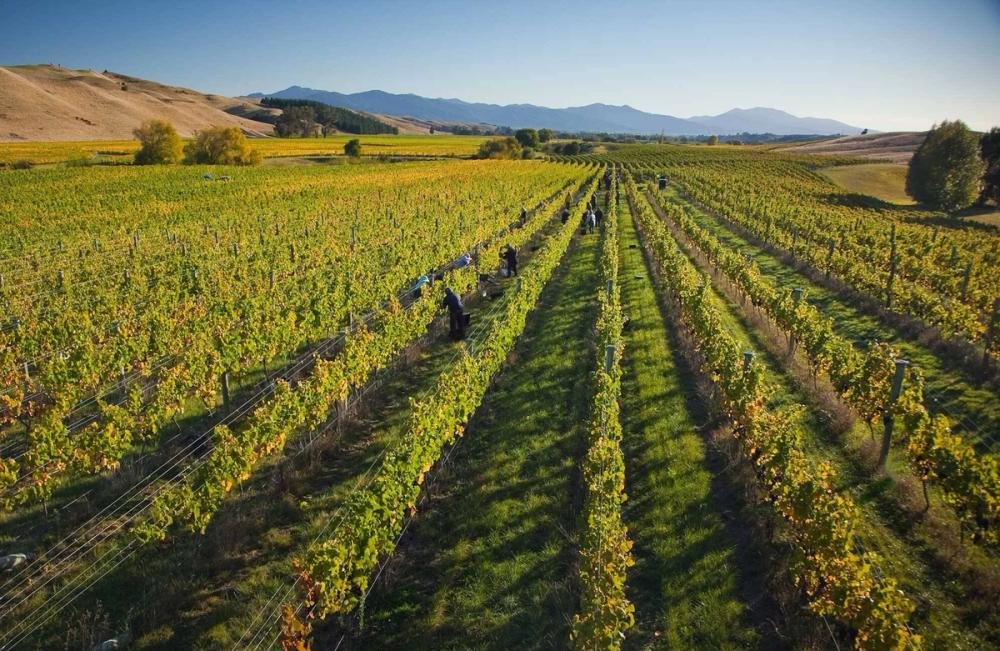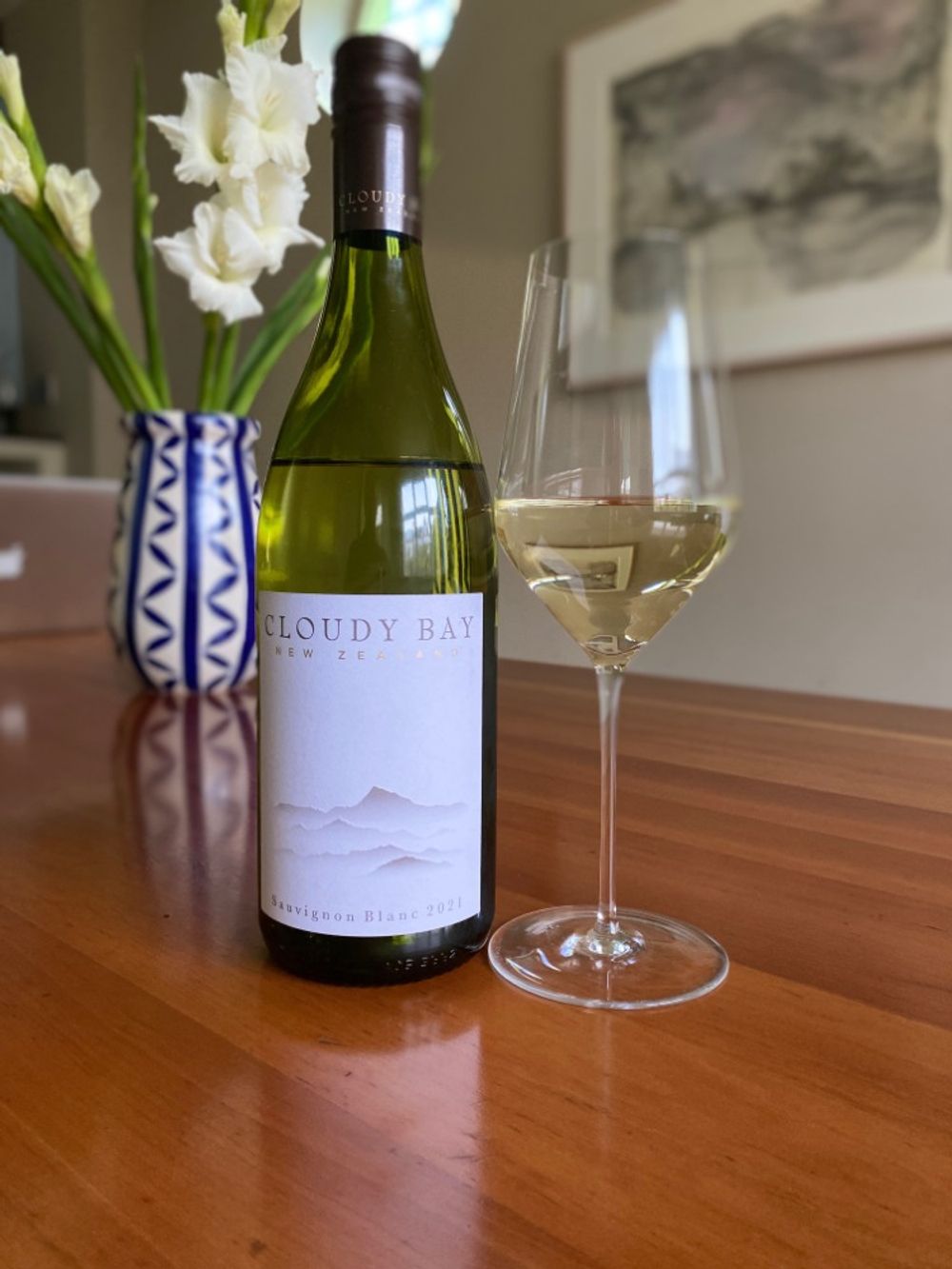“The 2021 has more weight on the palate, more flesh on the bones – it feels overall more rounded, less angular, more instantly enjoyable for pure, easy enjoyment and being a real crowd-pleaser,” writes Dean of Cloudy Bay 2021.
When asked what the most standout moment of the 2021 harvest was, Cloudy Bay’s technical director Jim White replied “That it wasn’t 2020.”
Beaming in live from Marlborough for the UK’s Zoom launch of Cloudy Bay 2021, White appears remarkably on the ball given that it’s his middle of the night. Fair play to him too that, like the gaggle of UK wine scribes on the call, he’s sat in front of (and tasting) four glasses of Sauvignon Blanc – the latest vintage of Cloudy Bay against the 2017, and the latest Te Koko 2019 alongside the 2016.

“G’Day London!”: Jim White, technical director Cloudy Bay Vineyards, October 11, 2021
White qualifies that 2020 was a fine year viticulturally, the third in a row of classic vintages, but it was what was happening all around which was the problem.
“2020 was another fantastic year but the world was turning upside down, it was so stressful, it was about managing the headspace of everyone working for us. You see all the dramas happened just two days before harvesting our Sauvignon… in fact we’ve still got Covid refugees from Estonia and Argentina who couldn’t get home. 2021 was their second vintage and they really made it hum. We found more work for them to do and now they’re now starting their third vintage, without them we’d have been crippled.”
Labour shortages in the vineyard is a current Marlborough problem especially, if like Cloudy Bay, estates pick exclusively by hand.
Another key issue for this Australian-born technical director is the world supply chain.
“There’s the logistical nightmare of getting on a boat to anywhere else in the world. There’s a shortage of ships coming to New Zealand and taking our containers away – it’s hitting apples, dairy it’s harder to get to market,” White says.
He’s mentioning this in the context of the low yields of the 2021 harvest which, because of an early bud break (by 8-9 days), saw frost damage that has led to a 30% drop in crop compared to 2020 regional average (up to 50% for the Pinot Noir).
“After the dramas of the 2020 vintage New Zealand found itself in a pretty happy place. But we had a bit of a rocky start with a very early bud burst,” White continues. “Winters are not as cold as they used to be and the vines heralded spring time 10 days earlier than normal in late September which opens us up to a bit of frost risk. We had some in the first week of October which didn’t seem to create much damage but in hindsight it drove down yields. The flowering period was pretty terrible and by Christmas time the fruit-set showed we didn’t have many berries.”
Post-Christmas the weather improved with warm, dry, disease-free conditions but the quantities were well down, irrespective of good fruit maturity and acid levels. After its record sales in 2020 Marlborough was now warning the world that, for the first time, it wouldn’t be able to meet worldwide demand for its Savvy Blanc.
One impact of this, according to White, is that other producers are going to have to start implementing an allocation system like Cloudy Bay does.
“Other producers will have to start allocating wine or figure out how they work with supply constraints – when they have had no issues in the past 10 years.”
Cloudy Bay 2021 – the winemaking

When shorts were tighter. The Class of ’85: the winemaking team at Cloudy Bay about to put Marlborough on the map
Born and raised in the Yarra Valley outside Melbourne, White confesses to pinching himself that he is now custodian of the wine that he used to see in his Mum’s fridge in the late 1980s. His career path follows that of many in the LVMH stable – working in Domaine Chandon under the late, great Tony Jordan; and viticulturist at Cape Mentelle in Margaret River. He has been technical director at Cloudy Bay Vineyards for almost 11 years.
White studied agriculture at university and is not a winemaker per se. That is now the remit of newly-appointed Nikolai St George who became the estate’s senior winemaker joining from Giesen Wines last September, who will be overseeing the existing winemakers of Dan Sorrell and Victor Joyeux. Where that leaves some of the experiments that Sorrell was promising this time last year – a single vineyard Cloudy Bay, fermenting in concrete for Te Koko remains to be seen.
As for the winemaking of Cloudy Bay 2021 it was pretty much identical to the 2020 harvest with free run juice cold-settled before racking and inoculation with selected yeasts. Fermentation was carried out in steel tanks with 4% from old French barriques and larger format vats. The blend comprised 87 different parcels, which was down from 2020’s 96 parcels on account of the low yields.
Identifying different vineyard parcels has been a key part of the vineyard mapping project Cloudy Bay carried out three to four years ago and has been instrumental in redefining Te Koko, the oak-aged cuvée that is only made in the best and most appropriate vintages.

When Cloudy Bay bought their main vineyard sites they were told the soil was so poor that “even the rabbits turn up with packed lunches”
White explains that the new Te Koko 2019 is part of a new era for the wine as they are consciously “refreshing the project” to increase the wine’s age-ability (“often Cloudy Bay ages longer than Te Koko”) and to move away from toasty, old oak flavours.
The fruit for Te Koko comes from four of the oldest vineyards on the estate and an electro magnetic soil map has been able to identify which soils are moisture-holding, free-draining etc to allow ultimately for much tighter specificity on the length and acid drive of the fruit.
White and the winemaking team have focused on other areas: dialling down the percentage of 100% malolactic-fermented fruit that was used to move away from rich, buttery flavours (the 2019 Te Koko has 52% malo); introducing larger oak formats which help retain freshness; freshening up the oak profile generally with just 8% new wood used; and managing the ferments tighter to get dryness in the wine.
“We’re looking for more purity and more Sauvignon-ness, it’s a fresher, newer style and more reflective of the terroir and not the winemaker.”
Cloudy Bay 2021: so what does it taste like?

To look at the wine is water-like, almost colourless with a pale green hue; the nose is intensely fruity but more on the greener end of the spectrum – grapefruit, gooseberry, lemon verbena, lime, lemongrass. There is not a lot of passion fruit in there, some white peach (two of the thiols the team actively seeks) but again these notes are more discreet than in previous years. The nose is not dissimilar to the 2020.
The palate, however, is different from 2020 in that it feels more balanced. The attack is tense and racy with gooseberry and grapefruit pith, but where the 2020 vintage then had an overt smash of concentrated lime-green apple acidity that almost exploded in your mouth, the 2021 has this at its core but there is more weight on the palate, more flesh on the bones – it feels overall more rounded, less angular, more instantly enjoyable for pure, easy enjoyment and being a real crowd-pleaser. The flavour on the mid-palate is more citron pressé or well-judged lemonade than tart, acidic lime juice.
The quality is very good here, there is an attractive purity and ripeness to the fruit, a super-fine texture on the front palate, and an elegance but, dare I say it, there’s a subtlety and refinement that you don’t always associate with the wine that I think will win over some critics and give it a greater range gastronomically. I’m liking this elegant style very much.
Cloudy Bay 2021 – the technical bits:
Alcohol – 13.3% abv
pH 3.14
TA 6.83 g/l
Residual sugar 2.6 g/L
Tasted against Cloudy Bay 2017
The first of the two consecutive ‘shit vintages’ when two cyclones did their best to disrupt harvest, the 2017 is almost brash by comparison – lime cordial, key lime pie, lemon curd, honey and toast. The acidity has a greener lime zest edge and is more forceful on the palate. Quite a contrast to the 2021, even with four years on the clock. The 2017 is like the brash okker in a loud shirt at a party, the Cloudy Bay 2021 happier to blend in, not be so much the centre of attention and more assured of its place.































